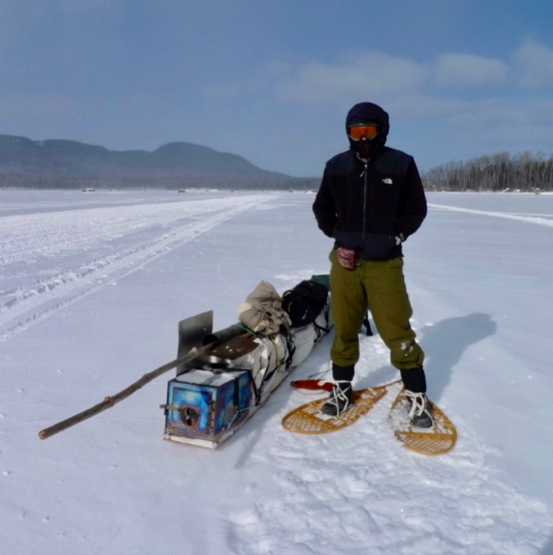I’m all over it with presentations in the next four months:
 Presentation title :9,000 Miles of Attitude: Aging and Endurance
Presentation title :9,000 Miles of Attitude: Aging and Endurance
From the ages of 57-63 Tom thru-hiked the Appalachian, Pacific Crest, and Continental Divide National Scenic Trails. He is a Maine Guide and is currently writing a new book about mental and physical conditioning and extending one’s ability to fully engage in outdoor recreation activities. For the past 25 years, Tom has been singing and playing accordion in King Pirogi, a four piece polka band. He plans to hike and bike exactly 2,020 miles in the coming calendar year. Tom grew up on a dairy farm. In 2014 Tom was the 230th recipient to be awarded the Triple Crown of Hiking award from the American Long Distance Hiking Association after thru-hiking of three of the USA’s longest National Scenic Trails. His first book, “In the Path of Young Bulls: An Odyssey on America’s Continental Divide Trail” was published in 2017. After retiring as a psychologist and mental health counselor in 2002 Tom has been guiding individuals and groups on four season adventures in the Northeastern US. His current interest is inspiring others to engage in wilderness adventures at any age.
March 21 Maine Sport Outfitters : Rockport, Maine
Backpacking & Hiking Symposium 10-4 details will be posted when available
March 27 L.L. Bean, Freeport, ME 7-9 PM
Book Talk “In the Path Of Young Bulls: An Odyssey on America’s Continental Divide Trail”
Tom Jamrog, Maine Guide and Past President of the Maine Association of School Psychology, has over a half-century of experience exploring the outdoors. In 2014 Tom was awarded the Triple Crown of Hiking award from the American Long Distance Hiking Association for his thru-hikes of the Appalachian, Pacific Crest, and Continental Divide National Scenic Trails.
At the age of 63, Tom rose up out of retirement to assemble a team of 4 proven long distance backpackers who took on the daily challenge of walking over 2,500 miles over a 5 month span on the Continental Divide Trail. The book details the daily ups and down of life on the trail and also serves as a resource for section and long-distance hikers in planning their long distance adventures.
Trail Days: Damascus , VA Friday May 15- Sunday May 17
Attitudes, Actions and Apps: Lessons Learned from 9,000+ Backpacking Miles
Uncle Tom ( AT GA>ME, 2007) was awarded the Triple Crown of Hiking award in 2014. He published his first book “In the Path Of Young Bulls: An Odyssey on America’s Continental Divide Trail” in 2017. Tom will discuss his experiences and research from his upcoming book on endurance and essential training ( physical and mental) for long distance backpacking success. Topics will include gait analysis, pain management, recovery myths and facts, over- and under-hydration, and meditation.
Old Mill Conference Room, 215 Imboden St.
on Friday May 15 from 12:45-2:15 pm
You can also stop and chat with Tom at the Atlas (Guthook) Guides vendor booth, where he’s working for the weekend.































